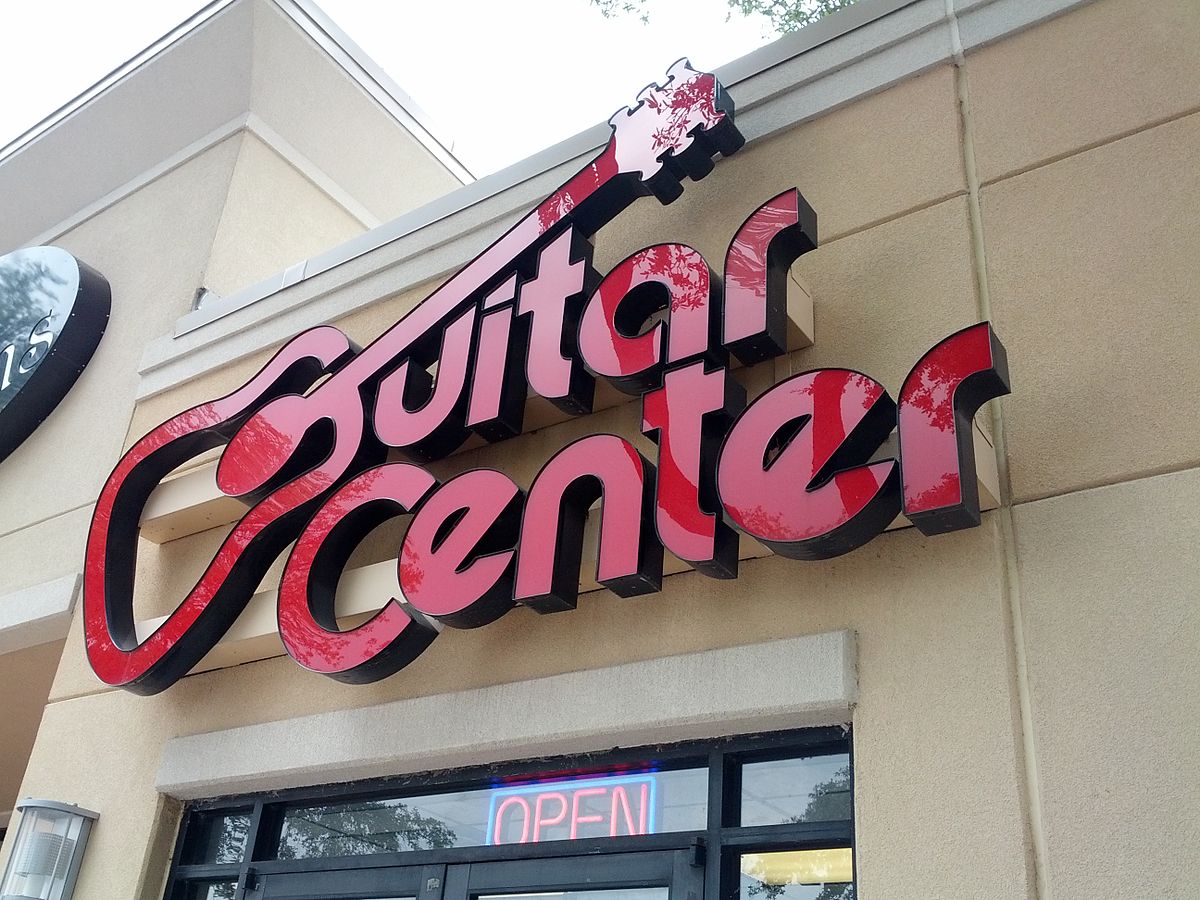At the very tail end of 2017 retailer Guitar Center acquired Audio Visual Design Group (AVDG), an approximately $30 million integration firm serving commercial and residential markets, to strengthen its for its Business Solutions Group.
[related]It was seemingly the last acquisition in a year of prolific M&A activity in the commercial integration market — but it has the potential to be the most significant.
In its press release, Guitar Center explicitly noted that its sees the Audio Visual Design Group acquisition as a key step toward helping its Business Solutions Group expand more into integrated solutions. Consider also that the announcement was made by Doug Carnell, Guitar Center’s VP of business solutions — formerly of AVI-SPL.
Carnell is an AV integration industry guy. His 30-plus-year AV career began working for a small AV firm before moving to SPL, eventually AVI-SPL, where he held roles such as general manager and VP of operations.
Many integration firms have been acquired by private equity firms and we’ve seen that the improved financial backing has allowed many of those firms to invest in their businesses and expand further.
In the case of AVDG, which will operate as a dedicated arm of the Business Solutions Group, it has been acquired by a retailer with great interest in and leadership with a keen understanding of the AV integration market – not to mention $2.2 billion in annual revenue, according to Forbes.
From the press release:
Audio Visual Design Group has distinguished itself in the industry by offering system design and installation in both corporate and residential market sectors, providing Guitar Center an important channel to serve these markets as it continues its outreach into the world of B2B solutions.
Carnell, for his part, suggests that a Guitar Center-backed Audio Visual Design Group has tremendous and unique opportunities to make great strides in the commercial integration market, adding that he feels that bolstering AVDG’s established go-to-market strategy may help it contend with the “big three,” he says, referring to AVI-SPL, Diversified and Whitlock.
“From a sales perspective, Guitar Center is bigger than all of the integration firms,” Carnell says. “From a market-competitive situation we have more locations and more capability and, in the case of some of the vendors, purchase multiple times what other integrators purchase.”
Meanwhile, Audio Visual Design Group — which had done about 75 percent commercial and 25 percent residential business — won’t be Guitar Center’s last acquisition in the AV integration market, Carnell emphasizes.
Carnell talked to Commercial Integrator about Guitar Center’s acquisition of Audio Visual Design Group and how it intends to tackle the AV integration market.
First off, given the acquisition of AVDG, Guitar Center must see a lot of growth potential in the commercial AV integration market.
Carnell: Without a doubt. There are tremendous opportunities for companies looking at the integration market. I really see there’s a need for the market to return to some of its roots and focus on bringing the creative process back to integration. With that focus in mind, we see an opportunity to become a national footprint integrator.
The acquisition of Audio Visual Design Group wasn’t Guitar Center’s first B2B move. Can you talk about the Business Solutions Group?
Carnell: First, Guitar Center historically has been a large purchaser of pro-audio gear. When you consider the major integrator brands, you are talking about some of the key brands in our core musical instrument business.
There may be a misunderstanding from some in the industry that we don’t know anything about the integration business or the vendors that are keys to success. The reality is that we actually do more business with integration vendors than most integrators.
“I really see there’s a need for the market to return to some of its roots and focus on bringing the creative process back to integration. With that focus in mind, we see an opportunity to become a national footprint integrator,” says Guitar Center’s Doug Carnell.
Second, Guitar Center has had customer relationships with businesses for many, many years and our business sales are greater than the sales of most integration businesses.
We have over 280 stores and are able to leverage our national footprint. Our focus historically has been in the areas of studios, houses of worship, education and bar/restaurant [and] retail.
Last year we reorganized our professional and business operations into a new business called GC Business Solutions. This new group was founded to build on our historical operations and incorporate additional businesses from the AV integration and backline/production worlds to grow a more robust B2B arm.
In the AV Integration business, my goal is trying to figure out how to go back to the way AV business was founded many, many years ago – having AV engineers actually design systems and solve complex high-technology customer issues with creativity.
I have been involved with offices where that approach gets lost and ends up having great designers seeing their talents not used to their fullest.
How do you see what AVDG has always done in the commercial market changing under the new leadership?
Carnell: First and foremost, AVDG now has access to capital that it did not have as a single entity. As a large retail organization, Guitar Center can leverage capital and capability as well as leveraging its vendor relationships that cross between the core and AV businesses.
“There may be a misunderstanding from some in the industry that we don’t know anything about the integration business or the vendors that are keys to success. The reality is that we actually do more business with integration vendors than most integrators,” says Guitar Center’s Doug Carnell.
Audio Visual Design Group is a great company and it is going at the market very differently than most of the larger integrators.
They are a design-build firm and are focused on design-build processes, whether that be the residential or the corporate market.
As GC Business Solutions continues to grow through additional acquisitions, we will add to these firms’ capabilities to their design operations.
As we incorporate new acquisitions to the family, my goal is to build and merge talent pools in a way that results in the best of all companies and efficient use of skill and expertise, rather than the kind of singular work organization chart you would see in a large corporation where the CEO is disconnected and making most of the key decisions.
In my mind, a whole team of CEOs from different firms can combine resources and perspectives to figure out ways to truly solve the market’s problems, while also focusing on providing the best customer experience. That’s where I think AVDG is going to contribute, from their unique experience of offering design-build services.
Since you were at AVI-SPL the dynamics of the market has changed. The largest firms have gotten larger, there’s more private equity investment in firms and the gap between the largest firms and small- and mid-sized firms has widened. It sounds like you think that a Guitar Center-owned AVDG has a unique market approach that you think is going to help in this environment.
Carnell: From a sales perspective, Guitar Center is bigger than all of the integration firms. So, from a market-competitive situation we have more locations and more capability and, in the case of some of the vendors, purchase multiple times what other integrators purchase.
I believe any company we acquire will benefit from Guitar Center contributing the resources that usually only the larger AV firms have access to, and as such we can help them to be on a footing that’s equal to the major firms, if not larger.
I believe there is plenty of business for more integrators and the goal is to figure out how to be better, offer more and disrupt the market; I am confident we can do that. All of the big three, let’s call them, go at that market with a national footprint, which I believe you need to have.
For the smaller integrators, you can either become a member of the various organizations that allow for smaller entities to roll up and work with each other and offer a national footprint; stand alone in a region; or expand your own business to find a way to become a national player.
“As GC Business Solutions continues to grow through additional acquisitions, we will add to these firms’ capabilities to their design operations,” says Guitar Center’s Doug Carnell.
Let’s not forget that the larger portion of the market for pro AV is still made up of a very large percentage of smaller integrators. Again, there is plenty of business for all.
I believe it’s those small integrators that are still looking for an opportunity to grow and help customers and they are going at the market differently because they have to. I want to be the best AV company we can be.
To me, our goal in strategic purchases of other integrators in the market is to expand those smaller talents and build something special and unique.
I also think the market has changed because technology continues to advance. The balance of small and large has grown further and further apart, but I think there’s plenty of room for more integrators to join that space.
If certain firms are going to compete, though, they’re going to have to find a different way of competing. If you’re going to go after just that one bid that’s on the street in your city and you’re going to try to compete against a Goliath, that’s going to be hard to win. That’s not necessarily the business I think you have to win to be a very large integrator.
I think there are many projects that so small- to medium-sized integrators are making huge margins on because they’re building a long-term relationship. They’re going into the market differently, and that’s where I want to be.
I’m not really looking to be that next competitive bidder on a large project. I’m going to go find out about that project two years in advance and win that business by offering something special and personalized.
In my opinion, that’s how you provide value to your clients and build long-term relationships.






































